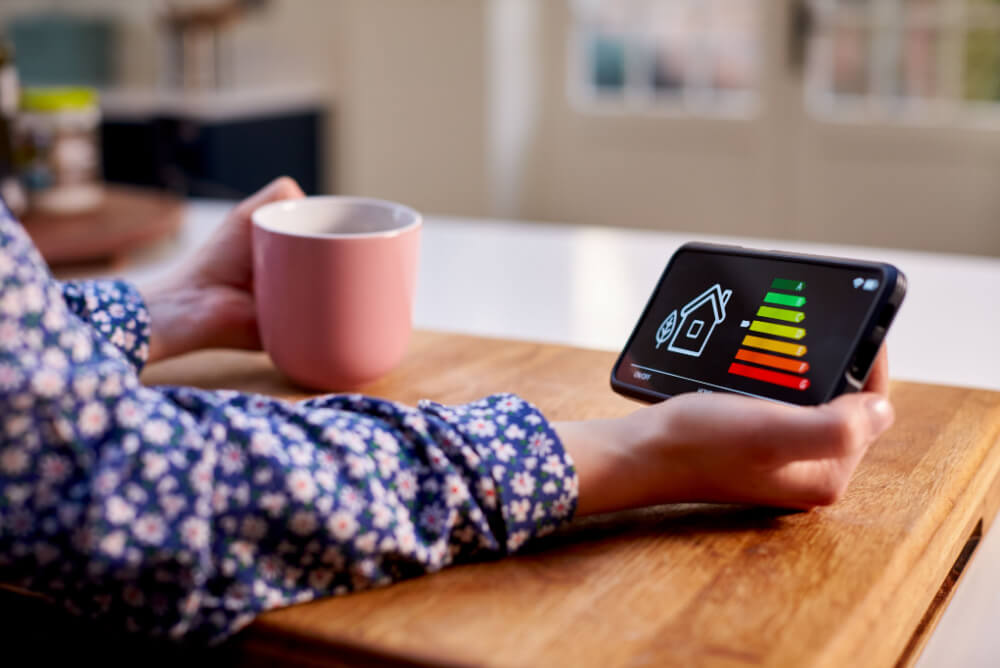Understanding what areas in the home are consuming the most energy can help reduce electricity bills. Different households have different energy habits, so monitoring your electricity usage can help you understand what appliances are contributing the most to your bills and shine a light on where to reduce electricity in the home.
Energy monitoring tools and calculators are a great way to keep track of your electricity usage, costs and even CO2 emissions. These devices can help track exactly how many kilowatts of electricity per hour each appliance or gadget uses in your home. We’ve put together a few tips, tricks and strategies to help you better manage your relationship with electricity and potentially lower your energy bills at the same time.

The most precise way of monitoring your electricity usage in Australia is with a smart meter. These real-time energy monitoring systems, which are steadily being rolled out across many parts of Australia, can provide both you and your electricity retailer with greater insight into your power usage.
Most smart meters can be connected to in-home displays, web portals (i.e. a website you can log into) or mobile apps. Regardless of your operating system, you’ll be able to find a range of power usage tracking apps that can help you monitor your electricity usage and reveal any patterns, outliers or drastic changes in your energy use.
If you have a rooftop solar PV system, your smart meter can also track how much solar power your solar panels are generating, how much is used in the home and how much electricity is sent back to the grid. Solar panels are also a great way of lowering your electricity consumption of non-renewable sources and reducing your emissions.
PowerPal and Wattcost are great Australia-based energy monitoring apps that can track your energy usage and are available for both Android and iOS. Through a government initiative, Powerpal smart energy monitors are currently available for free for eligible households in Victoria.1 These apps work in conjunction with an external monitoring device that can display real-time data on your energy habits. If you purchase an energy monitor, you may also need to call an electrician to install these onto your existing meter.
Be sure to explore your options until you find an app that suits your needs. Some electricity retailers may also offer in-home displays. If you have a basic meter, you can get in touch with your electricity retailer to find out how you can get a smart meter installed in your home.
There are different types of electricity monitoring systems that can help track your electricity usage around the home. These can be particularly useful if, say, you want to know the electricity consumption of specific home appliances and you can’t upgrade your current energy meter to a smart meter.
Smart plugs, for example, can monitor the electricity usage of specific appliances. While they can’t tell how much electricity you’re using in your entire home, it can be useful if there are particular home appliances you’re worried are consuming too much energy. If you track a home appliance at different times of the day and are on a time of use tariff, you can get an estimate on energy savings just by using appliances at different times of the day.
Smart home devices connect to the Wi-Fi in your home and can help manage your usage and energy efficiency. Smart thermostats, for example, allow you to alter the temperature from your home, even when you’re not home. Smart lighting is also often more energy-efficient and last longer than regular lightbulbs.
An effective way of getting a higher-level understanding of your electricity usage is to make use of appliance calculators, such as the one offered by the South Australia state government. Simply enter the details of the energy use of your appliances to see an estimate of their daily and annual running costs.
Such tools can be helpful if you’re trying to improve your home’s electricity management. For example, if the calculator identifies that you have a particularly inefficient appliance, you might consider replacing it with a more modern, eco-friendly solution. While the initial outlay may be costly, there’s a chance you could make this money back in savings over the course of its lifetime.

Once your energy monitoring device is up and running, you can pinpoint the times of day when your energy consumption is highest. For example, your household may use a lot of electricity at night when everyone’s home from work and school, or perhaps you’ve noticed an unusually high consumption consistently throughout the day.
Once you’ve recognised the times of day when you can make the greatest difference in your power consumption, you might be able to make energy-saving changes:
After you’ve identified the energy habits costing you the most, try to make changes to your routine to become more energy efficient; it could be as easy turning appliances off at the wall when not in use. By limiting unnecessary electricity use, you may be able to cut down on your energy costs around the home.
Perhaps the most obvious advantage is reducing the cost of your electricity bills. By having a system in place to accurately monitor your energy usage, you’re better equipped to identify inefficient electricity use and change your behaviour accordingly.
However, it’s worth noting that the benefits of tracking energy aren’t solely financially oriented. Reducing your household’s electricity usage and improving energy efficiency can help minimise your household’s carbon footprint. In the case of smart appliances, you can control when they’re turned on or off, or adjust settings (such as temperature). It can also flag when appliances are close to end of life and need replacing.

Tracking and reducing your electricity consumption isn’t the only way you can potentially save money on your power bill. By using our energy retailer comparison service, you may find a new electricity plan that better suits your energy needs. It’s simples to compare the rates, discounts and benefit periods, and the best part is that you can get a free quote in minutes!
So, what are you waiting for? See why it pays to compare energy plans today!
1 Seniors Online Victoria – Victorian State Government. Free energy monitor tool for Victorians. Last reviewed July 2022. Accessed September 2022.